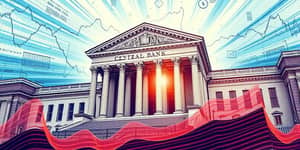
After a period of caution and unease, consumers across the nation are showing renewed optimism, buoyed by a robust labor market signaling stability. The latest jobs report, indicating sustained job creation and a steady unemployment rate, has prompted a noticeable uptick in how Americans view their financial prospects and the economy at large.
This article explores the key drivers behind renewed confidence, examines up-to-date sentiment indices, and considers the broader economic context that shapes consumer behavior. By delving into the numbers, regional variations, and lingering concerns, we uncover why sentiment matters—and how it might evolve.
As households weigh news of strong job growth against persistent inflationary pressures and global uncertainties, their collective outlook will influence spending, saving, and the future path of economic expansion.
May and June readings from two leading gauges of consumer attitudes reveal contrasting movements. First, the Conference Board Consumer Confidence Index dipped to 93.0 in June from 98.4 in May. Though down 5.4 points, this level remains above some recent four-year lows, highlighting ongoing volatility in sentiment.
By contrast, the University of Michigan Consumer Sentiment Index registered a sharp rebound, climbing to 60.7 in June from 52.2 the previous month. This jump reflects a significant shift in mood after concerns about tariffs and rising prices drove readings to near historical lows.
Consumers appear particularly encouraged by the prospect of job and income gains. In May, 19.2% of respondents expected more jobs to be available—up from 13.9% in April—while 18.0% anticipated higher incomes, compared with 15.9% a month earlier.
The rebound in May sentiment can be traced to several interrelated factors:
These elements combined to push sentiment indices higher, despite lingering caution regarding inflation and interest rates. Households, while feeling more secure about employment, continue to manage budgets carefully in the face of rising costs.
The strength of the jobs market lies at the heart of the sentiment story. Throughout early 2025, employers added thousands of positions each month, keeping the unemployment rate close to 4.0%. Wages have also edged above inflation, with real median weekly earnings rising by roughly 0.9% over the past year.
At the same time, corporate profits and stock valuations have driven household wealth to record levels. The S&P 500 hit an all-time high of 6,147.43 in February 2025, underpinning a broader expansion in consumer net worth.
Real GDP growth averaged 3.0% over the last four quarters, a healthy pace that has supported ongoing job creation and income gains. While Q1 2025 was revised slightly lower, forecasts for the remainder of the year remain upbeat, adding to the backdrop against which sentiment is measured.
Even as confidence improves, many consumers maintain a prudent stance:
Regional variations add complexity: state-level data show that while national sentiment rose in May, areas such as Florida saw dips earlier in spring before following the broader national trend.
This cautious optimism suggests households will likely spend selectively—prioritizing essentials and experiences—with discretionary outlays rising only gradually as confidence solidifies further.
Economists often point to a disconnect between strong economic fundamentals and measured consumer sentiment. Despite robust GDP growth, tight labor markets, and wealth gains, public confidence can lag or even turn negative.
Several explanations are offered for this paradox:
The upswing in sentiment fueled a late-June equity rally, extending gains from technology stocks into cyclicals such as energy and industrials. Investors interpreted the rebound as evidence that positive momentum has broadened beyond narrow sectors.
Policymakers at the Federal Reserve are watching these developments closely. A sustained improvement in consumer outlook, coupled with cooling inflation, could pave the way for interest rate cuts later this year. Conversely, renewed enthusiasm might rekindle demand-driven price pressures, complicating the Fed’s balancing act.
Overall, the resurgence in consumer confidence underscores the resilience of the U.S. economy. While challenges remain—from global uncertainties to household budget constraints—the interplay of labor market strength, income gains, and wealth effects is proving powerful in shaping a more optimistic public mood.
As we look ahead to the final quarters of 2025, the trajectory of consumer sentiment will be a key barometer for growth. Whether this upswing is sustained will depend on the Fed’s policy choices, the evolution of inflation, and the global economic environment. For now, the latest jobs report has given American households reason to believe that brighter days lie ahead.
References













